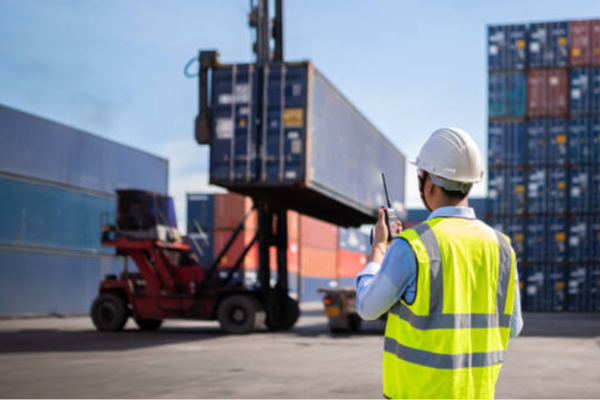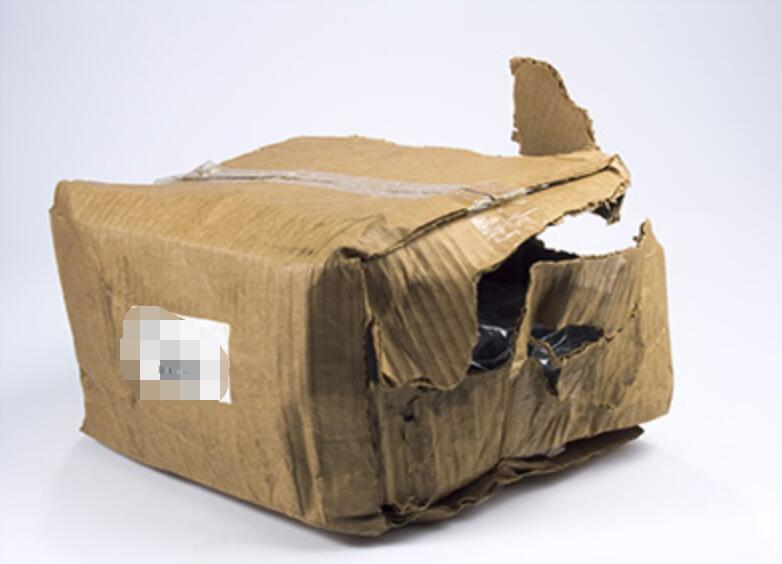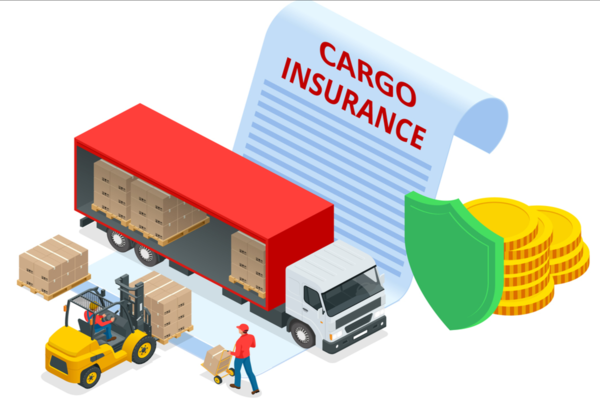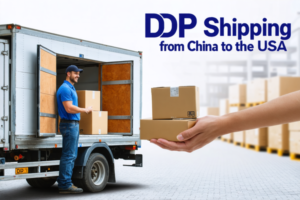Shipping from China can be highly profitable — but it’s also where many importers lose money, time, and credibility with their customers. After over 12 years in logistics, I’ve seen these problems repeat again and again: unclear costs, delayed shipments, and customs hold-ups that destroy profits.
In this guide, I’ll break down the 11 most common shipping challenges importers face and share proven, real-world solutions from DFH Logistics’ daily operations.
What Are the 11 Common Shipping Challenges?

When importers start shipping from China, many assume the process is straightforward — book a shipment, pay the freight, and wait for delivery. In reality, international logistics involves multiple parties, steps, and regulations. A small mistake at any stage — from factory coordination to customs clearance — can lead to costly delays, unexpected fees, or even shipment loss.
The most common shipping challenges importers face include:
- Hidden shipping costs
- Delayed shipments
- Customs clearance problems
- Inaccurate documentation
- Poor supplier communication
- Damaged goods during transit
- Incorrect HS codes or labeling
- Lack of shipment tracking visibility
- Wrong shipping method selection
- Difficulty consolidating goods
- Lack of cargo insurance and risk control
Each of these challenges can directly impact your bottom line — affecting delivery times, customer satisfaction, and profit margins. But the good news is that every problem has a practical solution.
In the next sections, I’ll break down each challenge one by one, explain why it happens, and show you how to overcome it effectively based on real case experiences from our DFH Logistics clients. Let’s start with the first — hidden shipping costs, the issue that surprises importers most often.
1. Hidden Shipping Costs and How to Overcome?
Hidden shipping costs when importing from China often include local port handling, customs inspection fees, storage, and final-mile delivery charges. The key to overcoming them is to request transparent, all-inclusive DDP quotations.
When importers contact multiple freight forwarders, they often receive quotes that look extremely low — but only cover port-to-port shipping. Later, the real invoice adds “surprise” charges such as:
- China local charges (export documentation, warehouse handling)
- Destination terminal fees (THC, port service fees)
- Customs clearance & import duties
- Last-mile delivery costs
- Demurrage or storage fees for delayed pickup
These costs can easily increase total expenses by 30%–50%.
How to Overcome It:
- Always ask your freight forwarder if the quote includes door-to-door delivery, customs clearance, and taxes.
- Choose DDP (Delivered Duty Paid) shipping, which includes all fees in one rate.
- Avoid forwarders who refuse to provide a written breakdown of costs.
- Compare offers from multiple logistics companies to identify hidden charges.
For a complete explanation of cost components, see
How to Avoid Hidden Fees When Shipping from China and How to Get Accurate Shipping Quotes from China.
2. Shipping Delays and How to Prevent Them?
Shipping delays from China are mainly caused by documentation errors, port congestion, customs inspection, or supplier late delivery. Prevent delays by planning schedules early and maintaining close coordination.
From my experience, delays usually come from one of three sources:
- Supplier delays — production or packaging not finished on time.
- Carrier schedule changes — flight or vessel overbooking.
- Customs inspection hold-ups — incomplete paperwork or wrong HS codes.
Even a one-day delay in factory readiness can cause you to miss a weekly sailing, pushing delivery back by two weeks.
How to Prevent It:
- Set realistic lead times with suppliers and confirm cargo readiness early.
- Book shipment at least 7–10 days in advance of departure.
- Choose carriers with direct routes and reliable on-time records.
- Work with a forwarder who provides live tracking and proactive updates.
At DFH, we continuously monitor each shipment and communicate directly with carriers to adjust if unexpected congestion occurs. This minimizes downtime and ensures your goods move even during peak seasons.
3. Customs Clearance Problems and How to Solve?

Customs clearance issues often occur when documentation is incomplete, HS codes are incorrect, or product declarations do not match invoices. Accurate paperwork and using DDP services prevent most clearance failures.
Many first-time importers underestimate customs complexity. If your shipment contains mixed goods, the wrong classification can trigger long inspections or even fines. Common problems include:
- Declared value lower than market price
- Missing or mismatched commercial invoices
- Unclear product descriptions or HS codes
- Lack of import permits or certificates for restricted items
How to Solve It:
- Always verify the HS code before booking.
- Make sure your invoice and packing list match perfectly.
- Avoid under-declaring value — customs can re-assess and penalize.
- Use a freight forwarder offering DDP shipping, who handles import duties and paperwork on your behalf.
We’ve handled countless shipments that passed customs in hours because we prepared compliant declarations and paid duties in advance. This not only prevents fines but ensures predictable delivery.
For detailed guidance, visit
Essential Customs Documents When Importing from China
and
How to Avoid Customs Delays When Shipping from China.
4. Inaccurate or Missing Documentation and How to Fix It?
Incorrect or missing documents—like the commercial invoice, packing list, or bill of lading—are among the top causes of customs delays and clearance rejections. The solution is double verification and expert document preparation.
Many importers assume their supplier will “handle all documents,” but this is risky. Common document problems include:
- Missing export declaration or certificate of origin
- Mismatched product names or quantities between invoice and packing list
- No consignee tax ID or incomplete address
- Typographical errors that trigger customs verification
How to Fix It:
- Always request copies of the commercial invoice, packing list, and bill of lading before departure.
- Confirm all details (weight, HS code, consignee, value) match exactly.
- For suppliers without export rights, your forwarder can make the China export declaration on their behalf.
- Use a professional logistics partner who audits every document before submission.
At DFH Logistics, our documentation team checks all export and import paperwork for compliance with both Chinese and destination customs. This saves clients from costly rejections or re-entries.
To learn which paperwork you must prepare, read
All Documents You Need for Shipping from China.
5. Poor Communication with Suppliers and How to Improve?
Miscommunication between suppliers, buyers, and freight forwarders causes incorrect packaging, wrong labeling, and missed shipping deadlines. Centralized communication and bilingual coordination solve this problem.
When sourcing products from different suppliers, you might find:
- Some suppliers don’t understand export documentation requirements.
- Misaligned shipping schedules cause consolidation delays.
- Time-zone differences delay responses by a full day.
How to Improve It:
- Assign a single logistics partner to manage supplier coordination in China.
- Keep all communication records (chat, email, order lists) centralized.
- Request your forwarder to verify carton labeling, quantity, and packaging on-site.
- Ask for pre-shipment photos or videos to confirm readiness before loading.
At DFH Logistics, we speak directly with your suppliers in Chinese, confirm pickup details, verify packaging, and consolidate updates into one clear communication thread. This eliminates confusion and ensures timely shipping.
For more details, see
How to Find Reliable Freight Forwarder Companies in China
to understand why choosing the right forwarder also improves communication efficiency.
6. Damaged Goods During Transit and How to Prevent?

Goods are often damaged in transit due to poor packaging, stacking pressure, or moisture exposure. Prevention requires professional packing, palletization, and optional cargo insurance.
Importers often overlook packaging standards until it’s too late. Common causes of damage include:
- Thin cartons for heavy products like electronics or tools
- Lack of wooden frame packages for fragile shipments
- No corner protection or shock absorption during handling
- Improper stacking in LCL containers
How to Prevent It:
- Reinforce packaging using double-wall cartons or wooden crates for fragile or heavy items.
- Add palletization and wrapping film for bulk goods.
- Use silica gel and waterproof liners for sea freight.
- Purchase cargo insurance to cover potential loss or damage.
At DFH Logistics, we inspect packaging upon warehouse arrival, re-pack fragile goods when needed, and provide photographic proof to clients before shipping. Our cargo insurance partnerships also help clients secure protection at discounted rates.
7. Incorrect HS Codes or Labeling and How to Correct Them?
Incorrect HS codes or labeling can cause customs reclassification, unexpected tax increases, or clearance delays. The best solution is accurate product classification and compliance with destination labeling rules.
When shipping from China, every product must be declared under an HS (Harmonized System) code, which determines the duty rate and import eligibility. Using the wrong code can lead to:
- Underpaid duties and fines
- Customs reclassification and long inspection times
- Rejection of goods at destination
Labeling errors—like missing “Made in China” or CE marks—also lead to compliance issues, especially for shipments entering the USA or EU.
How to Correct It:
- Always confirm the HS code with your freight forwarder before shipment.
- For new products, cross-check with official customs databases or your local customs broker.
- Include mandatory labeling such as “Made in China” or CE/FDA markings for regulated goods.
- Avoid using one HS code for mixed goods; classify each product properly.
At DFH Logistics, we help importers classify goods correctly based on material, function, and customs records, reducing the risk of inspection and penalties.
8. Lack of Shipment Tracking Visibility and How to Improve?
Lack of visibility makes it difficult to manage inventory and predict arrival dates. Full tracking integration and proactive status updates ensure control over your shipment from China to destination.
Many importers rely on manual updates from suppliers or carriers, which are often delayed or inaccurate. This lack of transparency creates frustration, especially for e-commerce businesses needing real-time delivery data.
How to Improve It:
- Work with a forwarder that offers end-to-end tracking from pickup to delivery.
- Request a tracking dashboard or periodic updates at each logistics milestone.
- For express or air freight, ask for direct links to DHL, UPS, or FedEx portals.
- Maintain direct contact with your logistics agent, not just the supplier.
At DFH Logistics, we provide door-to-door shipment tracking, notifying clients at each key stage—pickup, export, customs clearance, and final delivery. You’ll always know where your cargo is and when it will arrive.
9. Choosing the Wrong Shipping Method and How to Decide Correctly?

Selecting the wrong shipping method—air, sea, express, or rail—can waste both time and money. The right choice depends on cargo size, urgency, and budget.
Many importers make one of two mistakes:
- Using air freight for large shipments, which dramatically raises costs.
- Using sea freight for urgent cargo, leading to missed sales or stockouts.
Each shipping method serves a specific purpose:
- Express freight (DHL/UPS/FedEx) — ideal for small, urgent parcels under 100 kg.
- Air freight — suitable for medium-sized cargo needing fast transit (5–10 days).
- Sea freight — best for large-volume or heavy goods at lower cost (30–40 days).
- Rail/truck freight (to Europe) — offers balance between cost and speed.
How to Decide Correctly:
- Assess weight, volume, and delivery time requirements.
- Compare the total landed cost (shipping + duties + delivery).
- Ask your freight forwarder to provide multi-channel options to choose from.
You can compare all transport modes in
Air Freight from China to USA: Cost, Time & Process
FCL and LCL Sea Freight from China to USA,which is Best?
10. Difficulty Consolidating Goods from Multiple Suppliers and How to Handle It?

When importing from multiple Chinese suppliers, managing pickups, packaging, and combined shipping can become complex. Consolidation services simplify logistics, save cost, and reduce customs risks.
Many e-commerce importers source from several factories on Alibaba or 1688, but face challenges such as:
- Different suppliers completing orders at different times
- Inconsistent packaging sizes or labeling
- High costs when each supplier ships separately
- Difficulty preparing a single customs declaration for all items
How to Handle It:
- Use a freight forwarder with a dedicated warehouse in China for consolidation.
- Ship all suppliers’ goods to one address for checking, repacking, and labeling.
- Combine shipments into one master carton or pallet to reduce freight cost.
- Create a unified commercial invoice and packing list for smooth customs clearance.
At DFH Logistics, we provide free 30-day warehousing in Shenzhen for clients consolidating multiple suppliers. Our team photographs all received items, repacks them professionally, and prepares combined documents to ensure seamless export and import clearance.
11. Lack of Cargo Insurance and Risk Management — How to Protect Your Shipment?

Without proper insurance, importers risk losing their goods to damage, theft, or natural disasters. Purchasing cargo insurance and maintaining risk management protocols protect your shipment and investment.
Many importers assume that the carrier or forwarder automatically covers losses, but this is rarely true. Standard carrier liability is minimal — usually $2–$10 per kg — far below actual cargo value. Major risks include:
- Damage caused by improper handling or accidents
- Container loss during sea transit
- Warehouse theft or fire incidents
- Force majeure (storms, flooding, port strikes)
How to Protect Your Shipment:
- Always request a cargo insurance quote before booking.
- Choose All-Risk coverage, not limited liability.
- Maintain photo documentation before and after packaging.
- Work with a forwarder who partners with reliable insurance providers.
At DFH Logistics, we arrange discounted marine insurance with leading global insurers for all DDP, air, and sea shipments. This ensures your goods are protected from the moment they leave your supplier until final delivery.
Final Thoughts
Every importer faces these shipping challenges at some point. The key difference lies in how quickly and effectively you solve them. With the right logistics partner, even complex problems — from customs clearance to supplier coordination — become predictable and manageable.
We don’t just move cargo — we manage every step: pickup, consolidation, export declaration, customs clearance, duty prepayment, and final delivery.
If you’re currently facing shipping issues or want a transparent, all-inclusive quote: Contact DFH Logistics today to get a customized solution designed to simplify your imports and improve delivery performance.




